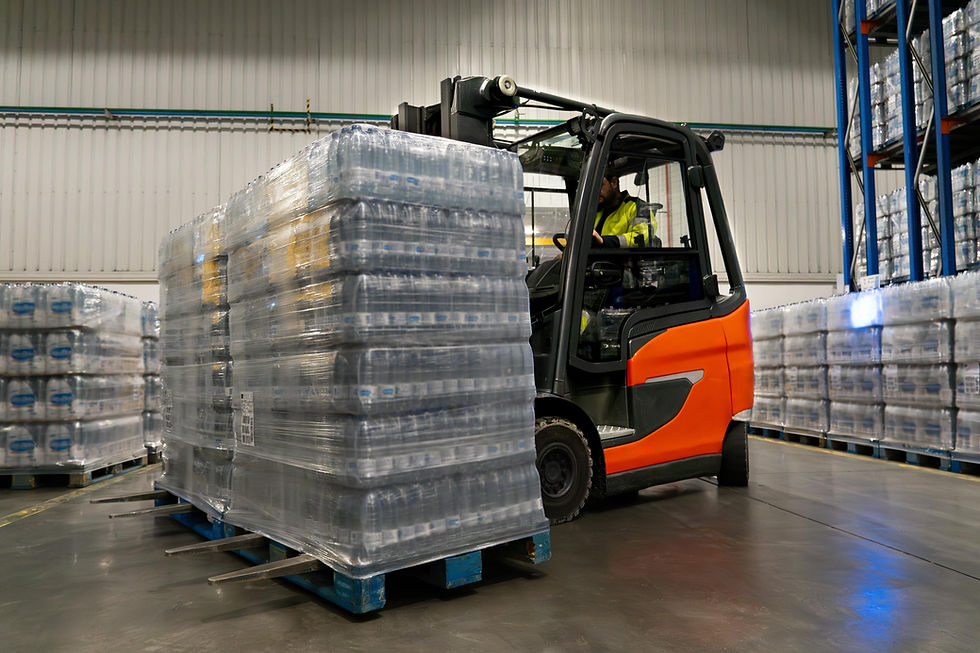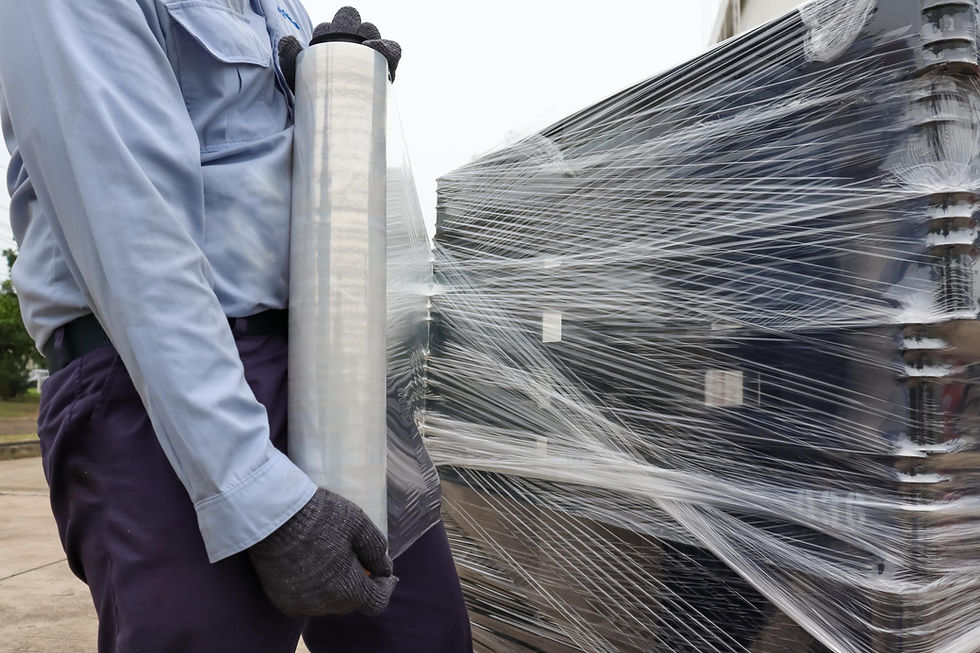Industrial Wrapping Film has Streamlined Shipping
- MMP Corporation

- Feb 21, 2023
- 3 min read

Most of the warehouse and shipping professionals in the world today can’t imagine performing their jobs without the use of industrial stretch wrap. The use of this tool has become so pervasive that manufacturers expect it to be used without specifying it.
Protecting pallets with industrial wrapping film was first demonstrated to the world in 1973. Before that, shippers had to make do with packing pallets close together and using "load locks". These were aluminum bars that could be expanded across the width of the truck and locked in place to hold the load from shifting backwards when the truck moved.
If the pallets weren’t stacked in line with the edge of the pallet, reducing the open space in the trucks, shippers would have boxes on the pallets shifting whether or not the shipper was using a load lock. So, they were only a partial remedy to the problem of loads shifting while in transit.
One of the major problems was that shifting loads also meant damaged products. With insurance rates going up, both shipping companies and manufacturers were actively looking for an alternative method to ensure that loads remained stationary while in transit and damage was reduced.
Introduction of Industrial Stretch Wrap
Both manufacturers and the shipping industry around the world quickly adopted stretch film. It was inexpensive when compared to the damage and losses both industries had suffered without it. It was also lightweight and didn’t add significantly to shipping costs. Manufacturers started wrapping pallets of their goods when they were still in the manufacturing facility to protect against damage. Liquids prepared for shipping in this way also had the added benefit of being protected from spillage by the water-proof plastic.
The resulting drop in damaged and spilled goods was noticed by the insurance carriers who then reduced the rates charged in accordance with the use of the film. Soon every forklift and pallet jack in a warehouse had a roll of film on it, and wrapping pallets became a necessary part of the job in ensuring the safe transit of a load.
Improving the Product
Many manufacturers and shipping companies took note of the fact that the tighter a pallet was wrapped and the more wraps used, the stronger the holding strength of the wrap. While humans could only apply a limited amount of tension by hand-wrapping, a machine could apply almost unlimited tension to a pallet being rotated on a turntable.
Stretch wrap film for industrial machines was created that was thicker and able to be stretched tighter. The machines and the machine-grade film were both designed to create an almost impenetrable unit that would eliminate the chance of damage to the contents of a pallet.

Today, these heavy-duty machines are responsible for reducing the cost of operations in warehouses around the world. The reduction in costs is often passed onto the consumer by the manufacturer in a bid to maintain a competitive edge.
Industrial Stretch Wrap Increases Speed
Hand-wrapped pallets do still exist however. This method is used whenever pallets get broken down and partial orders are shipped. Hand-wrapping allows a quick and easy method of reducing damage when you don’t have time to visit the pallet-wrapping machine.
Hand-wrapping pallets is also often a safety requirement. It prevents heavy packages from becoming dislodged when in transit around the warehouse and causing injury to a warehouse worker.
Warehouse managers have also taken note of the increased speed that a properly-wrapped pallet enables. Warehouse workers need to use less caution in their handling of the pallets and pallets can be loaded into trucks and rail cars faster and more efficiently.
With the reduction in damage and spillage, less time is being wasted cleaning up spills and broken goods, and more time is being used productively to get the goods to their destination.
MMP’s M Stretch is Number One in Thailand
In Thailand and many countries around the world, the number one stretch wrap used by shipping companies and manufacturers is M Stretch from MMP Corporation. Contact us to learn more about the benefits of M Stretch in both hand and machine-wrapping applications.




